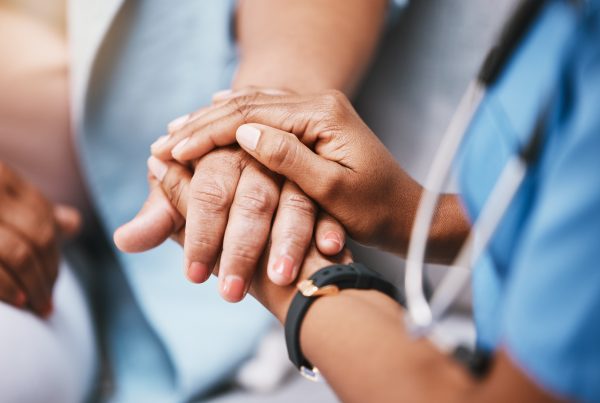
In last week’s blog, I discussed and defined critical thinking and clinical reasoning and the importance of decreasing content overload to strengthen the ability of student’s to readily APPLY and USE this knowledge at the bedside.
Today, let’s take a closer look at how Christine Tanner has deconstructed how a nurse makes a correct clinical judgment and how this nurse thinking skill can be strengthened.
Clinical Judgment Step-by-Step
Tanner (2006) has developed a model that breaks down in four steps how nurses in practice make a correct clinical judgment. This has relevance to nurse educators because it can help students strengthen their ability to make correct judgments by identifying breakdowns and identify areas of growth. The four steps Tanner identified are:
- Noticing: Though this can be part of nursing assessment, it is really much more. It emphasizes the nurse’s expectations of the current clinical situation. If the patient is presenting in a way that is expected or unexpected, a decision can be made based on his or her knowledge that is used and applied from the textbook as well as from prior clinical experience. Can the nurse identify what the most relevant clinical data is and why?
- Interpreting: Once the essence of the current clinical situation is grasped and relevant clinical data identified, this data must now be interpreted. What does this data mean and what is its significance? Unless a nurse has a deep understanding of the applied sciences, especially pathophysiology, the ability to correctly interpret will be impacted.
- Responding: Based on the correct interpretation, does the nurse need to ACT or rescue, or is further monitoring warranted?
- Reflecting: Two aspects of reflection are needed by the nurse to practically strengthen and develop clinical judgment. Reflection IN action and reflection ON action.
It is important to note that based on Tanner’s model, the nurse must be able to USE knowledge in order to NOTICE as well as INTERPRET the clinical data collected.
TMI in nursing education is a barrier to develop the needed DEEP understanding of what is MOST important and not only impacts student learning but also their ability to make a correct clinical judgment!
Two Types of Reflection Needed
1. Reflection-IN-action
This is the ability of the nurse to “read” the patient and how they are responding to CURRENT nursing interventions and adjust what is done based on the patient’s response.
Every student in the course of clinical will make a clinical judgment based on data collected. Deepen their learning by having them intentionally reflect on their decision making by having them ask the following questions?
- What can you learn from this?
- What (if anything) would you do differently?
- How can you use this knowledge in future patients you will care for?
Harness the power of reflection IN action in post conference by having each student share their reflections by using these three questions to guide reflection IN action.
2. Reflection-ON-action
Reflection ON action is required when a more thorough level of reflection is needed by the nurse because an error or incorrect judgment was made in the course of clinical.
Students as well as all nurses are human and will make mistakes. It is only a matter of when! Therefore the priority is to use this as an opportunity to learn from the error in judgment and determining what can be learned from what was just experienced and how that experience will contribute to ongoing clinical knowledge development that can be used in the future.
To guide student development of reflection ON action have them do the following steps of reflection by determining the following:
- Description. Describe the patient situation
- Feelings. How did you feel? What were you thinking and feeling?
- Evaluation. How did you or others react? What problems did you experience? What challenged you?
- Analysis. Explore details by determining what was the real problem? Why were they encountered? What did you base judgments on? Were these assumptions accurate?
- Conclusion. Make a decision to determine what really happened. What was done well? What could have been differently? Could you have responded differently?
- Action plan. Where do you go from here? Make a plan to do what is needed to maximize learning. Is additional knowledge or training is needed?
Reflection-on-action promotes student knowledge and clinical judgment by thoroughly dissecting and reflecting upon a clinical situation that may have been significant such as a patient change in status or error in practice. A recent review of the literature on clinical judgment and reasoning summarized their findings by stating, “Clinical judgment is a process that develops over a time in the nurse who consistently reflects in action and on action and responds accordingly” (Cappelletti, Engel, & Prentice, 2014, p. 458).
In Closing
Make it a priority to strengthen the ability of your students to develop the thinking that is required to make a correct clinical judgment.
DECREASE content and provide opportunities for students to USE knowledge in the classroom, allow students other ways to establish care priorities besides NANDA, and emphasize reflection to maximize the richness of learning that takes place in the clinical setting.
Encourage and emphasize student reflection in post-conference so that every student can then learn from one another and deepen their ability to make correct clinical judgments through the experience of others.
Remember that though clinical reasoning is essential to guide students to make a correct clinical judgment, reflection In action and reflection ON action can be another effective strategy to deepen and develop the ability of every student to THINK like a nurse!
Comment Question:
What barriers to strengthen nurse thinking are present in your program and what have you found effective to develop the ability of your students to make correct clinical judgments?
Comment below and let the conversation begin!
References
- Cappelletti, A., Engel, J.K., & Prentice, D. (2014). Systematic review of clinical judgment and reasoning in nursing. Journal of Nursing Education.53, 453-458
- Tanner, C. A. (2006). Thinking like a nurse: A research-based model of clinical judgment in nursing. Journal of Nursing Education, 45(6), 204–211.
Keith Rischer – PhD, RN, CEN
As a nurse with over 35 years of experience who remained in practice as an educator, I’ve witnessed the gap between how nursing is taught and how it is practiced, and I decided to do something about it! Read more…
The Ultimate Solution to Develop Clinical Judgment Skills
KeithRN’s Think Like a Nurse Membership
Access exclusive active learning resources for faculty and students, including KeithRN Case Studies, making it your go-to resource.



